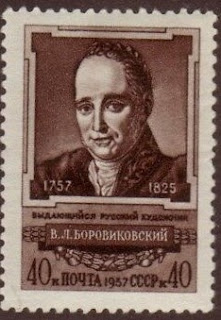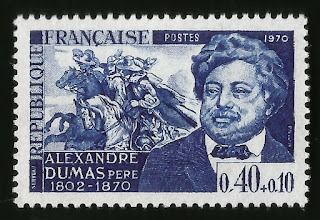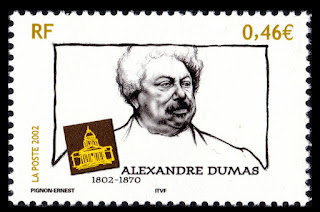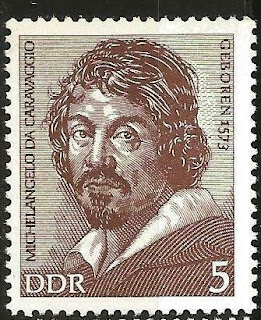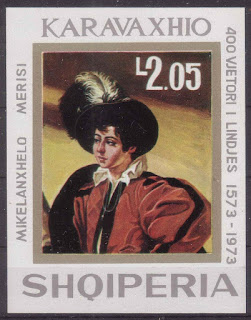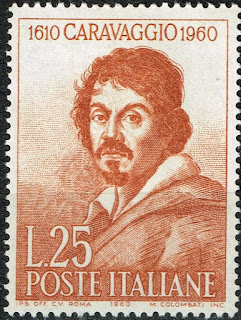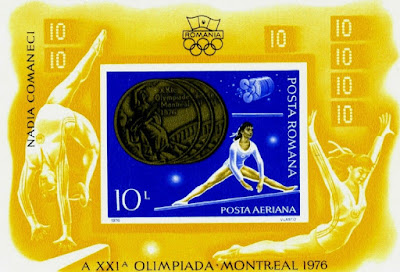Showing posts with label Romania. Show all posts
Showing posts with label Romania. Show all posts
Wednesday, July 24, 2019
July 24th in stamps Martin Van Buren, Borovikovsky, Alexandre Dumas
Here are some events that happened on July 24th. It could be an event or a person that died or was born on that day
1757 Born: Vladimir Borovikovsky, Ukrainian-Russian painter (d. 1825)
Vladimir Lukich Borovikovsky (Russian: Влади́мир Луки́ч Боровико́вский, Ukrainian: Володи́мир Лýкич Боровикóвський, Volodýmyr Lúkyč Borovykóvs’kyj) July 24 O.S. (August 4, N.S.) 1757 – April 6 O.S. (April 18, N.S.) 1825) was a Russian painter of Ukrainian origin who dominated portraiture in Russia at the turn of the 19th century.
He became a popular portrait painter and created about 500 portraits during his lifetime, 400 of which survived to the 21st century. He had his own studio, and often relied on assistants to paint the less important parts of a portrait. His sitters included members of the imperial family, courtiers, generals, many aristocrats, and figures from the Russian artistic and literary worlds. Most of his portraits are intimate in style.
The most notable are:
Portrait of Catherine II, Empress of Russia (1794)
Portrait of E. N. Arsenyeva (1796)
Portrait of M. I. Lopukhina (1797)
Portrait of F. A. Borovsky (1799)
Portrait of Paul I, Emperor of Russia (1800)
Portrait of Prince A. B. Kurakin (1801–1802)
Portrait of Princess A. G. Gagarina and Princess V. G. Gagarina (1802).
Portrait of Serbian Prince Karadjordje' 1816
Some stamps depicting Borovikovsky and or his paintings
1802 Born: Alexandre Dumas, French novelist and playwright (d. 1870)
Alexandre Dumas (born Dumas Davy de la Pailleterie 24 July 1802 – 5 December 1870), also known as Alexandre Dumas père (French for 'father'), was a French writer. His works have been translated into many languages, and he is one of the most widely read French authors. Many of his historical novels of high adventure were originally published as serials, including The Count of Monte Cristo, The Three Musketeers, Twenty Years After, and The Vicomte of Bragelonne: Ten Years Later. His novels have been adapted since the early twentieth century for nearly 200 films. Dumas' last novel, The Knight of Sainte-Hermine, unfinished at his death, was completed by scholar Claude Schopp and published in 2005. It was published in English in 2008 as The Last Cavalier
Some stamps from France, Monaco, Romania and Liechtenstein depicting Alexandre Dumas
1862 Died: Martin Van Buren, American lawyer and politician, 8th President of the United States (b. 1782)
Martin Van Buren (born Maarten Van Buren (December 5, 1782 – July 24, 1862) was an American statesman who served as the eighth president of the United States from 1837 to 1841. He was the first president born after the independence of the United States from the British Empire. A founder of the Democratic Party, he previously served as the ninth governor of New York, the tenth United States secretary of state, and the eighth vice president of the United States. He won the 1836 presidential election with the endorsement of popular outgoing President Andrew Jackson and the organizational strength of the Democratic Party. He lost his 1840 reelection bid to Whig Party nominee William Henry Harrison, due in part to the poor economic conditions of the Panic of 1837. Later in his life, Van Buren emerged as an elder statesman and important anti-slavery leader, who led the Free Soil Party ticket in the 1848 presidential election.
Some US stamps depicting Martin Van Buren
Thursday, July 18, 2019
July 18 in stamps Pedro II, Gemini 10, Nadia Comaneci , Caravaggio, Hendrik Lorentz
Here are some events that happened on July 18th. It could be an event or a person that died or was born on that day.
1610 Died: Caravaggio, Italian painter (b. 1571)
Michelangelo Merisi (Michele Angelo Merigi or Amerighi) da Caravaggio (28 September 1571 – 18 July 1610) was an Italian painter active in Rome, Naples, Malta, and Sicily from the early 1590s to 1610. His paintings combine a realistic observation of the human state, both physical and emotional, with a dramatic use of lighting, which had a formative influence on Baroque painting.
Caravaggio employed close physical observation with a dramatic use of chiaroscuro that came to be known as tenebrism. He made the technique a dominant stylistic element, darkening shadows and transfixing subjects in bright shafts of light. Caravaggio vividly expressed crucial moments and scenes, often featuring violent struggles, torture and death. He worked rapidly, with live models, preferring to forgo drawings and work directly onto the canvas. His influence on the new Baroque style that emerged from Mannerism was profound. It can be seen directly or indirectly in the work of Peter Paul Rubens, Jusepe de Ribera, Gian Lorenzo Bernini, and Rembrandt, and artists in the following generation heavily under his influence were called the "Caravaggisti" or "Caravagesques", as well as tenebrists or tenebrosi ("shadowists").
Below are some stamps depicting Caravaggio or his paintings from Italy, Albania, East Germany and the Vatican
1841 – Coronation of Emperor Pedro II of Brazil.
Dom Pedro II (English: Peter II; 2 December 1825 – 5 December 1891), nicknamed "the Magnanimous", was the second and last monarch of the Empire of Brazil, reigning for over 58 years. He was born in Rio de Janeiro, the seventh child of Emperor Dom Pedro I of Brazil and Empress Dona Maria Leopoldina and thus a member of the Brazilian branch of the House of Braganza. His father's abrupt abdication and departure to Europe in 1831 left the five year-old as Emperor and led to a grim and lonely childhood and adolescence, obliged to spend his time studying in preparation for rule. He knew only brief moments of happiness and encountered few friends of his age. His experiences with court intrigues and political disputes during this period greatly affected his later character; he grew into a man with a strong sense of duty and devotion toward his country and his people, yet increasingly resentful of his role as monarch
Upon leaving the country, Emperor Pedro I selected three people to take charge of his son and remaining daughters. The possibility of lowering the young Emperor's age of majority, instead of waiting until he turned 18, had been floated since 1835. His elevation to the throne had led to a troublesome period of endless crises. The regency created to rule on his behalf was plagued from the start by disputes between political factions and rebellions across the nation. Those politicians who had risen to power during the 1830s had by now also become familiar with the pitfalls of rule. According to historian Roderick J. Barman, by 1840 "they had lost all faith in their ability to rule the country on their own. They accepted Pedro II as an authority figure whose presence was indispensable for the country's survival." When asked by politicians if he would like to assume full powers, Pedro II shyly accepted. On the following day, 23 July 1840, the General Assembly (the Brazilian Parliament) formally declared the 14-year-old Pedro II of age. He was later acclaimed, crowned and consecrated on 18 July 1841
Below are some Brazilian stamps depicting Pedro II
1853 Born: Hendrik Lorentz, Dutch physicist and academic, Nobel Prize laureate (d. 1928)
1610 Died: Caravaggio, Italian painter (b. 1571)
Michelangelo Merisi (Michele Angelo Merigi or Amerighi) da Caravaggio (28 September 1571 – 18 July 1610) was an Italian painter active in Rome, Naples, Malta, and Sicily from the early 1590s to 1610. His paintings combine a realistic observation of the human state, both physical and emotional, with a dramatic use of lighting, which had a formative influence on Baroque painting.
Caravaggio employed close physical observation with a dramatic use of chiaroscuro that came to be known as tenebrism. He made the technique a dominant stylistic element, darkening shadows and transfixing subjects in bright shafts of light. Caravaggio vividly expressed crucial moments and scenes, often featuring violent struggles, torture and death. He worked rapidly, with live models, preferring to forgo drawings and work directly onto the canvas. His influence on the new Baroque style that emerged from Mannerism was profound. It can be seen directly or indirectly in the work of Peter Paul Rubens, Jusepe de Ribera, Gian Lorenzo Bernini, and Rembrandt, and artists in the following generation heavily under his influence were called the "Caravaggisti" or "Caravagesques", as well as tenebrists or tenebrosi ("shadowists").
Below are some stamps depicting Caravaggio or his paintings from Italy, Albania, East Germany and the Vatican
1841 – Coronation of Emperor Pedro II of Brazil.
Dom Pedro II (English: Peter II; 2 December 1825 – 5 December 1891), nicknamed "the Magnanimous", was the second and last monarch of the Empire of Brazil, reigning for over 58 years. He was born in Rio de Janeiro, the seventh child of Emperor Dom Pedro I of Brazil and Empress Dona Maria Leopoldina and thus a member of the Brazilian branch of the House of Braganza. His father's abrupt abdication and departure to Europe in 1831 left the five year-old as Emperor and led to a grim and lonely childhood and adolescence, obliged to spend his time studying in preparation for rule. He knew only brief moments of happiness and encountered few friends of his age. His experiences with court intrigues and political disputes during this period greatly affected his later character; he grew into a man with a strong sense of duty and devotion toward his country and his people, yet increasingly resentful of his role as monarch
Upon leaving the country, Emperor Pedro I selected three people to take charge of his son and remaining daughters. The possibility of lowering the young Emperor's age of majority, instead of waiting until he turned 18, had been floated since 1835. His elevation to the throne had led to a troublesome period of endless crises. The regency created to rule on his behalf was plagued from the start by disputes between political factions and rebellions across the nation. Those politicians who had risen to power during the 1830s had by now also become familiar with the pitfalls of rule. According to historian Roderick J. Barman, by 1840 "they had lost all faith in their ability to rule the country on their own. They accepted Pedro II as an authority figure whose presence was indispensable for the country's survival." When asked by politicians if he would like to assume full powers, Pedro II shyly accepted. On the following day, 23 July 1840, the General Assembly (the Brazilian Parliament) formally declared the 14-year-old Pedro II of age. He was later acclaimed, crowned and consecrated on 18 July 1841
Below are some Brazilian stamps depicting Pedro II
1853 Born: Hendrik Lorentz, Dutch physicist and academic, Nobel Prize laureate (d. 1928)
Hendrik Antoon Lorentz (18 July 1853 – 4 February 1928) was a Dutch physicist who shared the 1902 Nobel Prize in Physics with Pieter Zeeman for the discovery and theoretical explanation of the Zeeman effect. He also derived the transformation equations underpinning Albert Einstein's special theory of relativity.
According to the biography published by the Nobel Foundation, "It may well be said that Lorentz was regarded by all theoretical physicists as the world's leading spirit, who completed what was left unfinished by his predecessors and prepared the ground for the fruitful reception of the new ideas based on the quantum theory." He received many other honors and distinctions, including a term as chairman of the International Committee on Intellectual Cooperation, the forerunner of UNESCO, between 1925 and 1928.
According to the biography published by the Nobel Foundation, "It may well be said that Lorentz was regarded by all theoretical physicists as the world's leading spirit, who completed what was left unfinished by his predecessors and prepared the ground for the fruitful reception of the new ideas based on the quantum theory." He received many other honors and distinctions, including a term as chairman of the International Committee on Intellectual Cooperation, the forerunner of UNESCO, between 1925 and 1928.
Dutch stamp depicting Hendrik Lorentz
1966 – Human spaceflight: Gemini 10 is launched from Cape Kennedy on a 70-hour mission that includes docking with an orbiting Agena target vehicle.
Gemini 10 (officially Gemini X)[2] was a 1966 crewed spaceflight in NASA's Gemini program. It was the 8th crewed Gemini flight, the 16th crewed American flight, and the 24th spaceflight of all time (includes X-15 flights over 100 kilometers (54 nautical miles)).
For many years the spacecraft was the centerpiece of a space exhibition at Norsk Teknisk Museum, Oslo, Norway. It was returned on request in 2002.
The spacecraft is currently on display at the Cosmosphere in Hutchinson, Kansas.
Below is a cover with a postmark from USS De Haven as part of the US Navy Recovery Force
1976 – Nadia Comăneci becomes the first person in Olympic Games history to score a perfect 10 in gymnastics at the 1976 Summer Olympics.
Nadia Elena Comăneci is a Romanian retired gymnast and a five-time Olympic gold medalist, all in individual events. Comăneci is the first gymnast to be awarded a perfect score of 10.0 at the Olympic Games, and then, at the same Games (1976 Summer Olympics in Montreal), she received six more perfect 10s en route to winning three gold medals. At the 1980 Summer Olympics in Moscow, she won two more gold medals and attained two more perfect 10s. During her career, Comăneci won nine Olympic medals and four World Artistic Gymnastics Championship medals
A First Day Cover and a sheet depicting Nadia Comăneci
Gemini 10 (officially Gemini X)[2] was a 1966 crewed spaceflight in NASA's Gemini program. It was the 8th crewed Gemini flight, the 16th crewed American flight, and the 24th spaceflight of all time (includes X-15 flights over 100 kilometers (54 nautical miles)).
For many years the spacecraft was the centerpiece of a space exhibition at Norsk Teknisk Museum, Oslo, Norway. It was returned on request in 2002.
The spacecraft is currently on display at the Cosmosphere in Hutchinson, Kansas.
Below is a cover with a postmark from USS De Haven as part of the US Navy Recovery Force
1976 – Nadia Comăneci becomes the first person in Olympic Games history to score a perfect 10 in gymnastics at the 1976 Summer Olympics.
Nadia Elena Comăneci is a Romanian retired gymnast and a five-time Olympic gold medalist, all in individual events. Comăneci is the first gymnast to be awarded a perfect score of 10.0 at the Olympic Games, and then, at the same Games (1976 Summer Olympics in Montreal), she received six more perfect 10s en route to winning three gold medals. At the 1980 Summer Olympics in Moscow, she won two more gold medals and attained two more perfect 10s. During her career, Comăneci won nine Olympic medals and four World Artistic Gymnastics Championship medals
A First Day Cover and a sheet depicting Nadia Comăneci
Subscribe to:
Posts (Atom)



